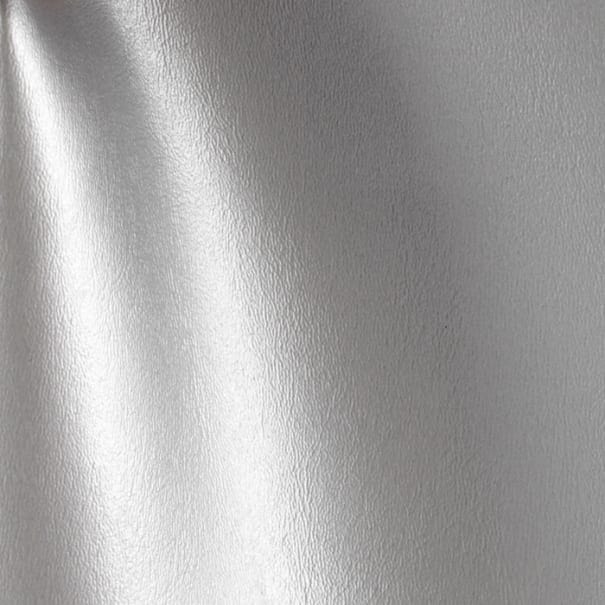If your pool tiles no longer look as good as the day they were installed, there are a few issues that could be causing the change. It could even be a water quality issue or a lack of proper pool maintenance that's impacting the visibility of the tiles and leading to hard-water deposits, not actual pool tile discoloration.
Let’s get to the bottom of this. Along with offering solutions and tips for fixing what looks like pool tile discoloration, you'll also find out what could cause tiles to change color.

Pool Tile Discoloration: 101
Let’s begin with pool tile education.
Pool tiles, whether they're porcelain or glass, are manufactured with special glazes that make them resistant to the sun's UV rays and chemicals used in maintaining swimming pools. These glazed finishes also help tile colors stay vivid and prevent them from fading.
Because of this special treatment, it isn't usually the tiles themselves that are discolored. Depending on the tile material and tile quality you opt for, there is a chance that the glaze can become scratched or damaged over time.
However, what you're usually seeing when your pool tiles appear faded or discolored isn't actually discoloration at all. It's usually an issue with calcium deposits in hard water, algae growth, or chemical imbalances.
Common Causes Of Pool Tile Discoloration
Now that we know that actual discoloration of pool tiles isn't always the problem, let's look at some common causes of what looks like discoloration and explore how to fix them.
1. Calcification
Calcification is the most common cause of pool buildup. It occurs when calcium deposits form on pool tiles. The deposits usually look like white or grayish stains. Calcium buildup is common and comes in two forms: calcium carbonate or calcium silicate.
Solution:
To remove calcium deposits on your pool tiles, first determine what kind of calcification you're dealing with.
In the case of calcium carbonate, you'll usually notice a fine buildup that grows in layers. Regular pool cleaning practices should take care of this. For more stubborn buildup, use a pumice stone or a specialized acidic tile cleaner that dissolves calcium deposits. Regular maintenance of water chemistry plays a big part in preventing this!
You might also be dealing with calcium silicate. It's usually identifiable by its sharper, crystallized appearance, and a high pH level in your pool water often causes it. You'll need a more extensive pool cleaning solution to address it. Calling professional pool cleaners in to do the job is a recommended move.
2. Bacterial Growth Or Dirt
Whether it's from inadequate cleaning or imbalanced water chemistry, it's not uncommon for your pool tile to look discolored due to build-up from bacteria and dirt. While this may be the most noticeable on white tiles, it can happen with colored or patterned tiles as well.
Like pool tiles, bacterial growth also comes in many colors. In your pool, you might see green, black, yellow, or shades.
Black, yellow, and green growth is usually caused by its respective algae. In the case of yellow algae, this is actually a form of green algae but it's chlorine-resistant and often looks like dirt or sand.
Solution:
Your best bet for removing bacterial growth and dirt is regular pool maintenance. Keeping your pool water balanced and clean will help prevent these issues from occurring in the first place.
If you do notice buildup on your tiles, a thorough scrubbing with a brush and chlorine tile cleaner often takes care of it.
Depending on the type of bacteria you're dealing with, there will be different solutions to address it. For that reason, if a basic pool cleaning isn't cutting it, it's best to get a set of expert eyes to take a look at it.
3. Dislocation Of The Grout Below The Waterline
If grout dislocation happens below the waterline tiles, it can result in water infiltration. This might translate to discoloration and weakened tile adhesion.
Solution:
Remove the discolored tile grout and reapply a waterproof, high-quality grout. Watch for grout dislocation as soon as it starts and practice routine maintenance to prevent it.
4. Pool Tile Stains
Stains from metals, leaves, and other organic materials can discolor a pool tile's surface. Metal stains only occur in pools with metals like iron, copper, or manganese. This is more common in pools near well water or pools that have collected rainwater.
Solution:
Determine the type of stain you’re dealing with before you work on removing it. For example, use a metal sequestrant for metal stains and a pool stain remover for organic stains. To avoid stains, regularly clean your pool and remove debris as soon as you spot it.
5. Poor Quality Pool Tiles
If you choose low-quality pool tiles, you'll likely deal with issues like chips, cracks, detachment, and even tile discoloration. Poor-quality tiles aren't well-suited for pool water conditions. The pool environment takes its toll, which often means your tiles will seem discolored too.
Sometimes, it's a matter of simply having chosen a pool tile color that isn't best for your unique pool design. Chat with pool tile professionals before you finalize your decision so you don’t experience buyer’s remorse.
Solution:
Choose high-quality pool tiles from reputable suppliers like Oasis Tile to ensure longevity and durability. Your pool tiles should be UV-resistant, chemical, and scratch-resistant and have lower water absorption rates than backsplash or bathroom tiles.
Shop our selection of best-selling pool tiles to feel even more confident about your selection.
Replacing Discolored Pool Tiles That Can't Be Cleaned
In the event your pool tiles are so discolored or damaged they need to be replaced entirely, hiring professional tile installers is the way to go.
If you're comfortable DIY-ing it, this is the basic process you'll follow:
- Drain the Pool: Lower the water level to access the tiles you're replacing.
- Remove Old Tiles: Carefully remove discolored tiles and clean the area.
- Apply Tile Adhesive: Use a high-quality pool tile adhesive.
- Place New Tiles: Install the new tiles and let the adhesive cure.
- Grout the Joints: Apply waterproof grout to the joints and seal them properly.
Shop For Beautiful Pool Tiles at Oasis Tile
You deserve high-quality pool tiles that don't chip, crack, fall, or discolor before their time. Trust Oasis Tile to offer the perfect fit! Order tile samples today and see what's possible with your pool.


























